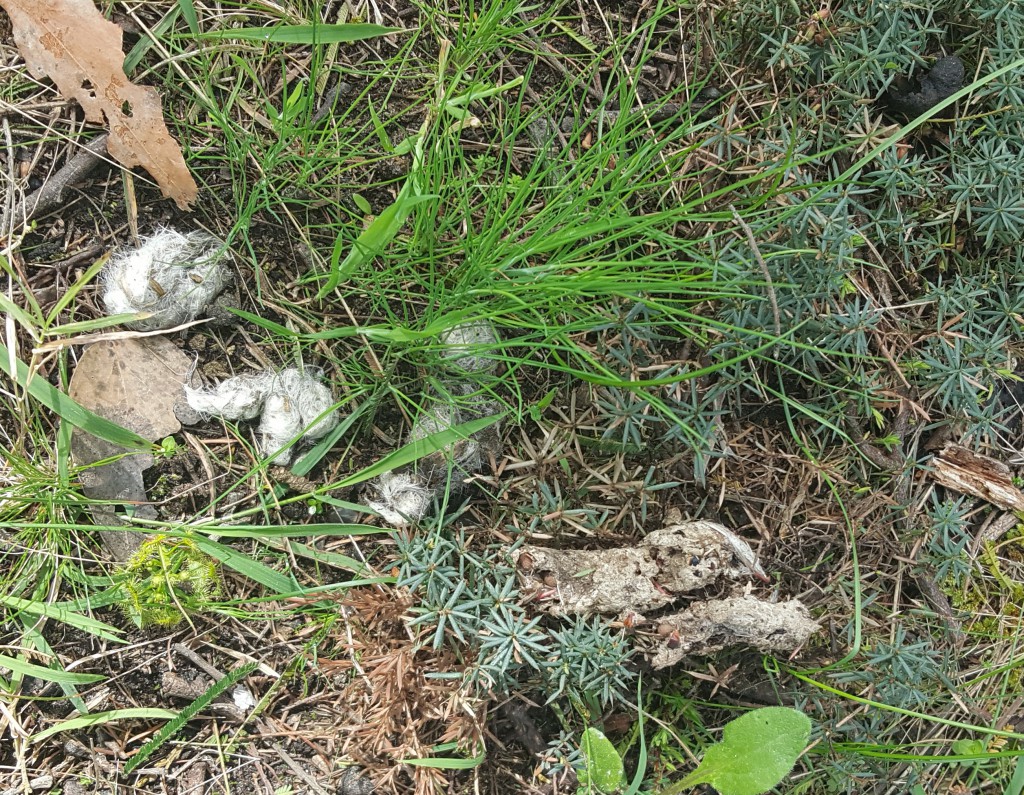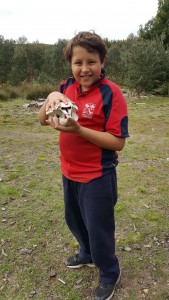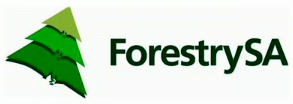Newbery Park students learn about animal tracks and traces
A couple of weeks ago I headed out to Gower Conservation Park, Tantanoola and a nearby biodiversity corridor with Year 3/4 students from Newbery Park Primary School. I met the bus-full of students with their teacher and SSO Angela at the conservation park, where we had a chat about what sorts of animals live in the area and what signs of life we might expect to see. The students had a good idea of what to look for already, so we then put our observation skills to the test looking for evidence.
During a 15 minute exploration of a small corner of the park the students had identified a range of tracks and traces. The students spotted roo poo and fox scat, as well as echidna diggings. After discussing native and introduced animals, and the diets of herbivores and omnivores, we headed a little bit further down the road to the Gower-Windy Hill biodiversity corridor.

Two very different fox scats found side by side, one containing wool, the other containing native fruit seeds
In sandier patches at the corridor we once again hunted for tracks and traces of wildlife, and found an uncountable number of kangaroo tracks, including some from joeys. The students completed a worksheet using their critical thinking skills to match animals to their footprints. Following this, the class enjoyed some unstructured play time including the opportunity to rifle through Ange’s box of nature treasures. One student remarked that it was his favourite excursion yet!
The following week, I joined Angela and Newbery Park’s Year 6/7 class in exploring the brand new walking trail at Honan Native Forest Reserve, Glencoe. There are various length walks available, and the class completed one of the longer options at 5.7 kilometres. While walking the students had to gather certain items by taking photos to gain points. For example, evidence of a mammal was worth ten points, while a photo of a bird was worth 50 (reflecting the difficulty of taking a photo of a moving target with an iPad). Look out for the official opening of the walking trail soon!
These excursions are part of ForestrySA’s Biodiveristy Corridors Schools program.


